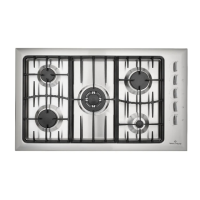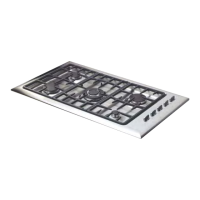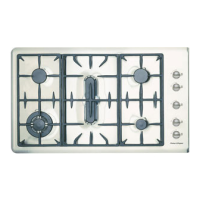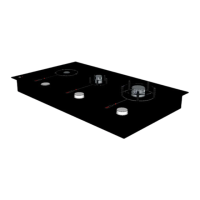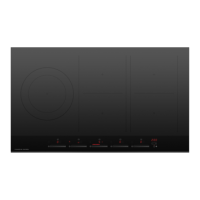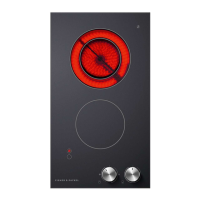
Do you have a question about the Fisher & Paykel GC600W and is the answer not in the manual?
| Brand | Fisher & Paykel |
|---|---|
| Model | GC600W |
| Category | Cooktop |
| Language | English |
Details the physical dimensions of the GC600, GC900, and GC9002/GC36 series cooktops.
Explains the nomenclature used for Fisher & Paykel cooktop models, including series and features.
Provides required dimensions for installing cooktops into kitchen countertops, including clearances.
Specifies burner types, gas ratings (MJ/h, kW, BTU), and corresponding orifice sizes for different gas types.
Lists the number and type of gas valves and flame failure valves used in various cooktop models.
Details the mains powered ignition system specifications, voltage, and part numbers for different series.
Presents the total gas consumption ratings in MJ/h, kW, and BTU for different models and gas types.
Emphasizes that gas products must only be installed and serviced by qualified Gas Service Persons.
Instructions on how to adjust the minimum gas flow setting for burners using a specific screwdriver.
Procedure for changing burner orifices to suit different gas types (NG/LPG) and adjusting gas pressure.
Step-by-step guide to safely remove the hob top, including detaching burner heads and probes.
Instructions for disconnecting power and gas, loosening brackets, and lifting the cooktop from its installation.
Procedure for safely disconnecting power, removing the top panel, and replacing a faulty ignition electrode.
Steps for replacing the electronic ignition box, including disconnecting electrodes and plugs.
Guide to replacing the microswitch loom for specific cooktop models after removing the hob top.
Method for testing the flame failure device by igniting the burner and checking gas shut-off.
Instructions for removing the hob, unscrewing the thermocouple from the gas valve, and replacing it.
Detailed steps for replacing a gas valve, including safety precautions, disconnection, and leak testing.
Procedure for re-greasing gas valve cones with high-temperature grease to ensure smooth operation.
Troubleshooting steps for ignition issues where no spark is present, checking electrodes, leads, and connections.
Diagnostic steps for when a spark is present but ignition fails, checking gas supply, spark gap, and earthing.
Troubleshooting steps for flames extinguishing after the control knob is released, focusing on the thermocouple.
Troubleshooting for auto-reignition systems with no spark, checking supply, electrodes, and leads.
Diagnosing ignition failure with spark present in auto-reignition, checking gas type, pressure, and ignitor placement.
Troubleshooting constant sparking after ignition, checking electrodes, earthing, polarity, and gas settings.
Steps to resolve flames extinguishing on the lowest setting, checking gas type, pressure, and low setting adjustment.
Troubleshooting distorted or large yellow flames, checking gas type, pressure, and burner cap seating.



